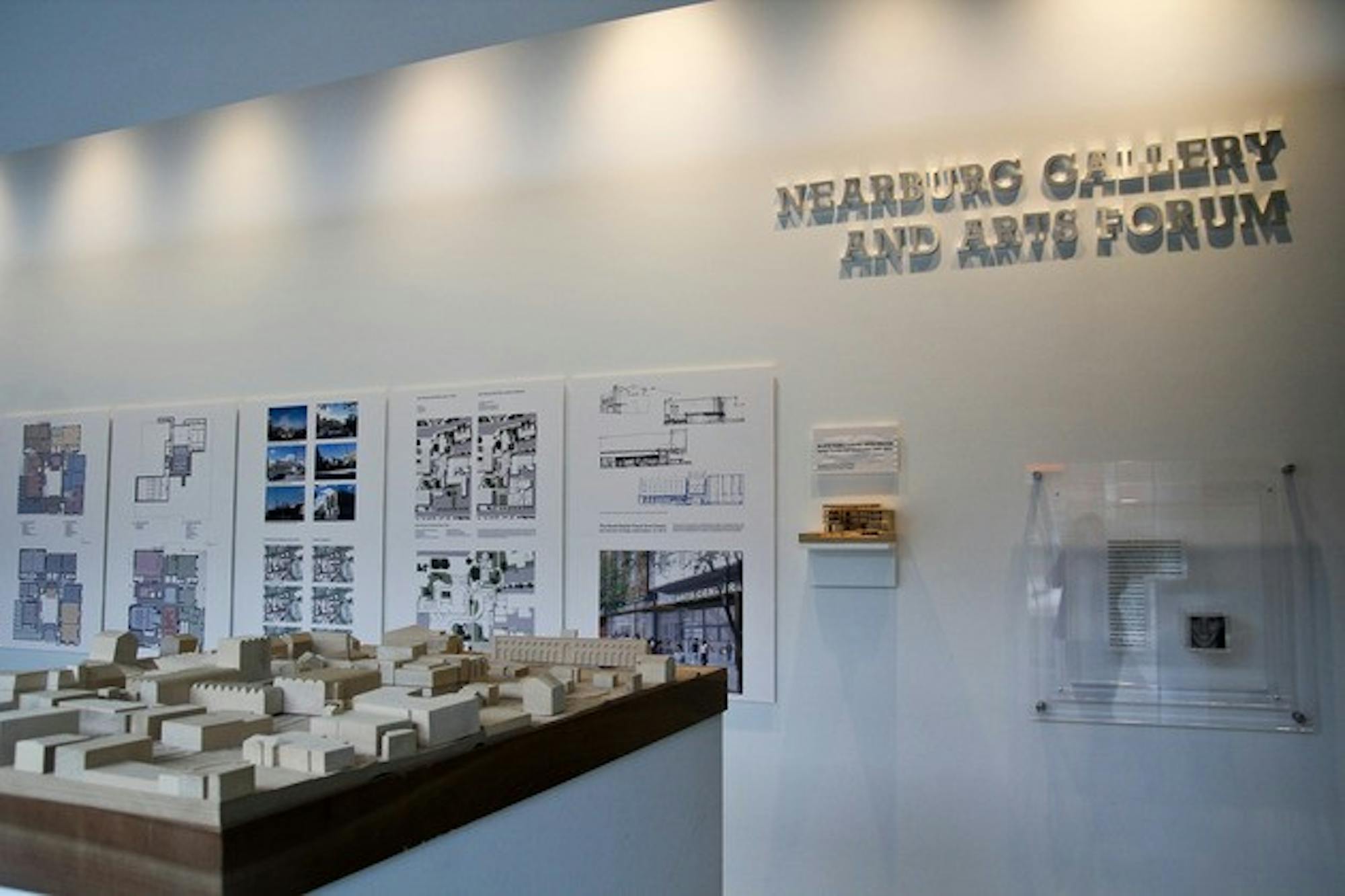Bourgeois' grandiose work of steel is not only technically enchanting, but also reflective of deeper themes experienced by Bourgeois throughout her life as an artist.
"[Crouching Spider'] is the greatest piece of public sculpture that's been made in the last 25 years," Michael Taylor, director of the Hood Museum of Art and chair of the public art committee, said. "Any campus in the world would love to have it."
The nine-foot-tall stainless steel spider truly brings the College's Arts District, which consists of the VAC, the Hopkins Center and the Hood Museum, to life.
"Our goal was to make the plaza a place of visual excitement," Taylor said.
The sculpture is the final piece of the puzzle, complementing and bringing together all of the surrounding arts buildings on campus. "Couching Spider," which will remain on campus until the end of the school year, mirrors the aluminum "Dartmouth Panels" by Ellsworth Kelly that were installed this summer, as if the two are in a dialogue with one another, according to Taylor. This lends the space a vitality and playfulness that goes beyond mere aesthetic appeal.
Bourgeois, a French artist who died in 2010, is universally revered by the art world, and those involved with the visual arts at Dartmouth feel incredibly honored to display one of her most famous pieces in the plaza.
"Bourgeois is one of the most inventive and important artists of our time," art history professor Adrian Randolph said. "[Crouching Spider'] is one of the most distinctive and memorable works of art to grace Dartmouth's campus."
Bourgeois' work is predominantly influenced by her upbringing and early career as a contemporary artist. Her mother, Josephine, was involved in the tapestry business and introduced her daughter to the arts at a young age, according to Taylor. This exposure ignited Bourgeois' passion to pursue a profession in the arts, he said, which her father and many others discouraged.
Bourgeois' mother, however, ultimately gave her the strength to follow her dreams, and her untimely death provided the catalyst for Bourgeois' self-discovery as an artist. Her ensuing sculptures such as "Crouching Spider" were extremely emotional and autobiographical, reflecting issues such as alienation, sexuality and the losses that Bourgeois faced in her own life.
Nicknamed the "Spiderwoman," Bourgeois used spiders as the primary subject in her work. In addition to "Crouching Spider," Bourgeois' bronze spider "Maman," made in 1999, is currently being featured at the Tate Modern in London. Bourgeois' mother inspired her choice of imagery, as her profession necessitated constant weaving, mending and spinning. On a more complex level, spiders possess protective, nurturing qualities that Bourgeois sought to represent visually as an ode to her mother, according to the Hood Museum's artist statement.
"Crouching Spider," however, is not only for the pleasure of artists and art historians. The beauty of the sculpture is that it is accessible and engaging to all who encounter it. Standing at 106.5 inches tall and 329 inches wide, "Crouching Spider" is truly a feat of mechanical engineering. Its massive weight is evenly distributed over the spider's eight legs, Taylor said, whose tips rest on tiny metallic balls affixed to the ground. This creates the appearance that the spider is floating, ominously presiding over anyone who chooses to walk beneath it.
"I am delighted and slightly terrified [when I see] this menacing beauty," Randolph said.
Although the sculpture may appear intimidating or foreign at first, like with most contemporary art, Taylor advises viewers to keep and open mind and to "let [the sculpture] unravel as you look at it."
Bourgeois' artwork seemingly guards the VAC, which is the new home of the film and media studies and studio art departments and provides ample space for drawing, painting, sculpture, photography and film students. The entranceway to the building features the Nearburg Gallery, which currently showcases artwork crafted by Dartmouth alumni.
"We always felt like an underground society, people who were majors, and now we're out of hiding." studio art major Lucy Morris '14 said, referring to the space as "inspiring."
The VAC also provides new, improved, well-lighted rooms that allow interdisciplinary interaction.
Currently, gallery space in the building is hosting an exhibit of work by studio art interns Bogyi Banovich '12, Malia Reeves '12, Stacey Deroisier '12 and Stuart Lantry '12. The space, though small and somewhat out of the way, provides a chance for students to curate and display their own work.
The VAC is equipped with state of the art digital editing systems for the film and media studies department, as well as an expansive screening room in the lower level. The VAC's Loew Auditorium seats more than the newly renamed Hood Museum of Art Auditorium but less than Spaulding Auditorium.
Staff writer Katie Sinclair contributed reporting to this article.




